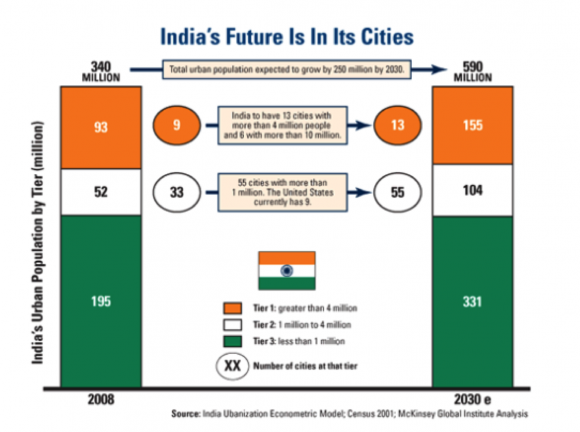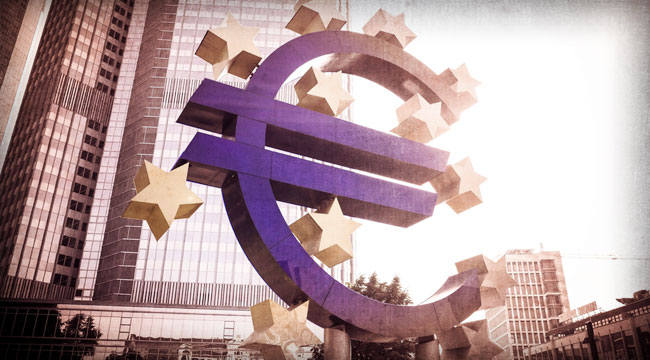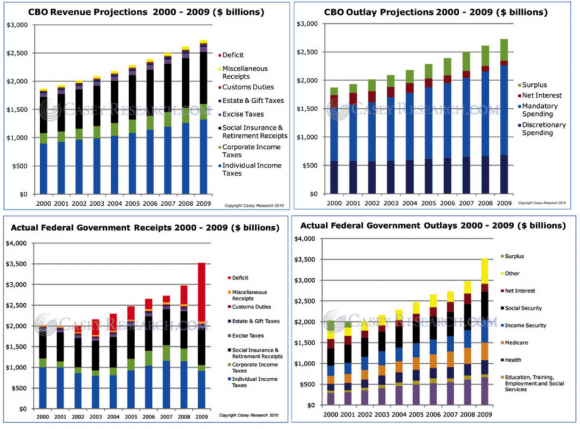Remember When…
Welcome to The Daily Reckoning’s “Remember When” series. Each day we turn back the clock and take a look at our musings from five and ten years ago to the day.
Not only will you be shocked at just how quickly time passes (yes, 2005 was a decade ago), but you can see what we predicted correctly, what we missed the mark on, and how history does, in fact, have a habit of rhyming.
5 Years Ago Today on The Daily Reckoning…
This article reported on the belief that India was on the verge of the second-greatest urban migration the world had ever seen, according to the McKinsey Global Institute’s report.
In the report, it was said that India’s urban population could soar to 590 million, nearly twice the size of the US, with 91 million middle class households by 2030. What’s more, India would have 68 cities with populations of more than 1 million, 13 cities with more than 4 million people, and 6 megacities with populations of 10 million or more.

Urban centers would be the key driver of Indian economic growth, which was expected to be five times greater by 2030, and India’s labor force would increase by 270 million, 70% of which would come from urban jobs. And, the labor force would be relatively young compared to other countries. The median age for the Indian population is 25.3 years, which is lower than Brazil (28.6), China (34.1), and Russia (38).
The article includes figures about what India will require to meet the needs of this urban class, including estimations like 2.5 billion meters of paved roads, 900 million square meters of commercial and residential space, and 7,400 kilometers of subways and transportation to be built. These investments would tally up to about one-third of India’s total GDP in 2009 — the country would have to build a city the size of Chicago every year for the next 20 years in order to create enough commercial and residential space.
Growth of the middle class in Asia was a key driver of demand for oil, steel, copper, cement, and other resources.
“Gold: The Great Uncertainty Hedge”
In this article, our editor reports on the front and center news of the morning, in which the 2-day trading range for the euro was tossed aside the night before, and the single unit had fallen through the 1.26 handle, all due to the thought that, although the aid package is in place, it would take too long for cost cutting to begin.
Why, wondered our editor, would traders bet on currency that was trying to cut deficit spending while also buying the dollar where there is nothing when it comes to cutting deficit spending.
Gold had set another all-time high the day before, at $1,248, but had backed off by $13 in profit taking, and the RBA was concerned about Eurozone problems affecting the rest of the world.
“Why the Gold Price Rises on Good News and Bad”
In this Bill Bonner essay, our dear editor commented on a guest editorial he saw in The Wall Street Journal, which suggested that the US return to the gold standard. Gold had gone up $22, stocks had gone nowhere, and gold was at an all-time high. Gold seemed to go up on good news, and on bad news, as well as inflation and deflation. When stocks went up or down, gold steadily rose regardless.
Bill believed this was because the gold market was anticipating a blow-up in the world’s monetary system, because he had seen it coming too. According to Bill, that’s what happens when a small country runs up too much debt — investors worry, interest rates rise, the country can no longer borrow to cover debts or pay past dues. This was happening in the US too, where we were already so deep in debt that even if we taxed 100% of American income, it still would not have been enough to cover the deficit. US national debt was approaching 100% GDP.
This article featured commentary from our editor about how the euro just ain’t what it used to be.
At writing, the euro had fallen for a third straight session in overnight trading. After showing conviction and fiscal integrity in the face of Greek rioters, European leaders had caved, and had promised $560 billion in new loans. The IMF planned to contribute up to an additional $321 billion. Translation? Debt and more debt.
Our editor is astounded that influential individuals still believed piling new debt on top of old debt would spell out future prosperity. Some central banks had already begun to cut euro purchases, and Greek workers called at 24-hour general strike in protest to pension cuts.
“Debt to Break the Back of the Welfare State”
Another article discussed the ECB bailout loans, in which our editor reiterates the fact that you cannot make any nation that is unable to service its mountains of debt more creditworthy by extending more credit. ECB was offering European banks nearly unlimited amounts of cash for three and six month borrowing periods. These were the banks with heaps of sovereign debt from Greece, Spain, Italy, Ireland, and Portugal, who were more than happy to sell that junk to the ECB.
EU policy makers had hoped that by extending more credit to sovereign governments would make bond investors back off. Our editor poses the question of who is on the other side of all the credit default swaps underwritten on European debt? Ultimately our editor suggests that speculators find out who sold default insurance on Greek and Spanish debt, and then short the living daylights out of them!
“New ‘Gold to Go’ ATM Launches”
This article featured commentary from CNBC about innovative gold “ATMs” launching in the notoriously high-rolling Abu Dhabi, amid fears that the EU’s rescue package was going to drive inflation higher.
Designed by German entrepreneur Thomas Giessler, the ATM monitored the daily price of gold and offered small gold bars that weigh up to 10 grams, complete with customizable designs. If you were the type to stay in one of the world’s most expensive hotels, this would be right up your alley as the dollar, yen, and euro bounced around in volatile trade. Plus, the region’s traditional ties in gold commerce made sense for this fast food version of gold distribution.
“The Mysterious Stagnation of M2 Money Supply”
In this article, the anemic growth of M2 money supply at the time is discussed. Our editor points out that this may have initially seemed confusing since the Fed is famous for over-printing fiat money and swelling money supply. Money supply, at writing, was stuck at $8.512 trillion.
Our editor investigated and found out that the S&P 500 index was back to where it was in 1998, giving investors literally zero nominal gain from the stock market after 12 years of faithful investing, and less than that after deducting fees, costs, taxes, and expenses.
The majority of investors must lose money and/or buying power so that a small minority of investors, if any, can make a small profit. They have lost about a third of their total buying power since the Bureau of Labor Statistics calculated that $1 in 1998 had the same purchasing power as $1.34 today, thanks to the Fed creating so much money.
“US Debt and Deficit Numbers Overlooked by the Mainstream”
In this Addison Wiggin article, he highlighted the two big numbers that made news yesterday as the market closed. The first was $82.7 million, which was the deficit the US Treasury posted the month prior. Compared to 2009, when the loss was only $21 billion, that was nearly four times as bad.
Addison included insight from Gene Steurle of the Urban Institute, who said that both liberals who wanted to maintain spending programs and conservatives who sought to keep taxes low appeared to want to think that economic growth would cure our problems.
Perhaps in the past fiscal imbalance was a current but temporary issue. But at this point, so much spending growth was built into law in permanent or mandatory programs that said programs would absorb all future revenues.
The second big number that made the news the day prior was reflected in the below chart:
Gold has reached an all-time high in US dollars of $1,241, and the dollar did what the euro, pound, and swiss franc already had. While there may not have been a direct connection between the budget figures and the gold price, Addison believed it was not difficult to put two and two together at a time the time.
10 Years Ago Today on The Daily Reckoning…
Bill Bonner mused over how America came to be the world’s superpower in the article. He explored the self-deception and preposterous ideas that led America to her first awkward steps as an empire, which began at the end of the 19th century with Theodore Roosevelt intervening in various countries with poor results.
America had mixed and confusing feelings about empire from the jump. While Rome was a clear indicator of what did not work, founders of our country couldn’t help but lust for the grandeur of it themselves, longing for what Bill refers to as the “imperial purple” from the very beginning.
Bill believes it was this imperial spirit that got the best of America. It is the world’s only superpower with no enemies capable of inflicting serious harm, so what is our country defending itself against? At this point, America is stuck with the role that had been thrust upon it, and provide security and the public good of law and order for the entire world.
America, Bill concludes, had cleverly deceived itself, and believed it got its tribute from globalized commerce and the loans given it by its trading partners, but in reality it is the subordinate powers that controlled the US. They can stop paying “tribute” whenever they want, and has the power to destroy our economy.
In this article, our editor reports on The Man Group plc (London: EMG) which oversaw $43 billion of hedge fund investments for various institutional clients worldwide, and was a global leader in the fast-growing alternative investments industry. It was the largest publicly traded hedge fund operator, and its share price trend may have offered clues about the health of the hedge fund industry, and the approximate health of the stock market.
In light of share prices recently falling at writing, our editor concludes that, even in ideal circumstances, the shares of Man Financial seemed like a dicey proposition to many savvy investors. However, on the other hand, Man’s share price trend might have contained a timely message, saying that the stock market is more likely to be a ‘sell’ than a ‘buy’ over the months ahead.
À tout à l’heure,
Genevieve LeFranc
for The Daily Reckoning
P.S. Making meaningful connections between the past and present of economics gives you a significant edge in the financial word, and knowing where we’ve been and how we got there helps to predict upcoming trends. When you sign up for the Daily Reckoning, you will receive this kind of critical –and entertaining– information every day, all while your wealth steadily grows. All this information at absolutely no charge to you. Sign up here today to start receiving The Daily Reckoning to your inbox, completely FREE.




Comments: